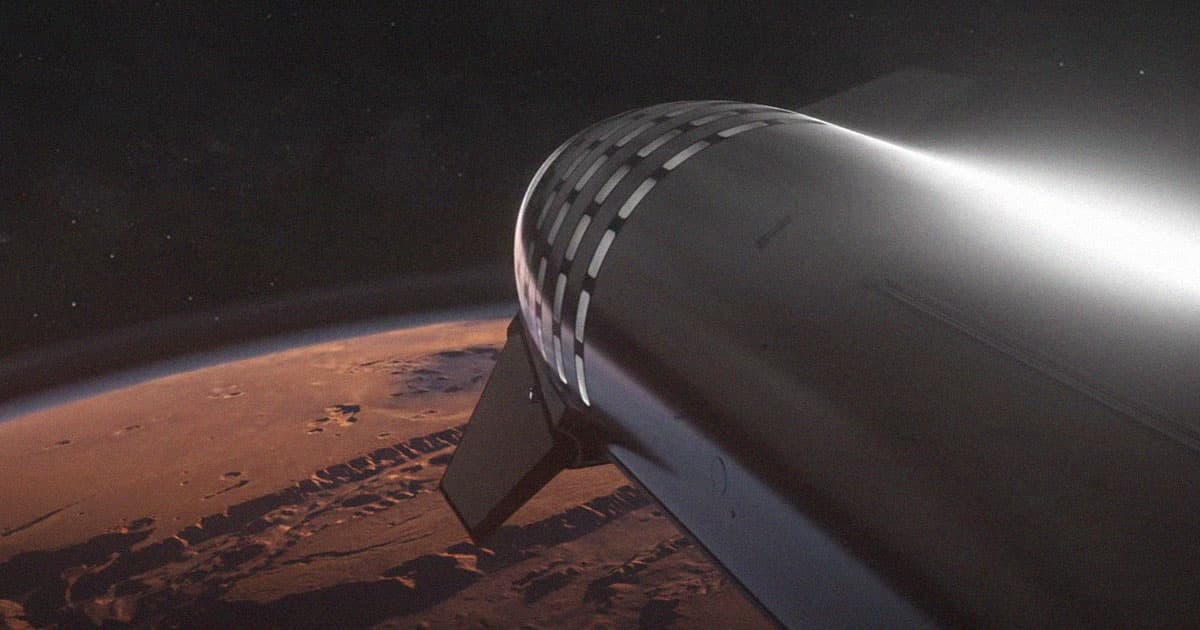SpaceX is gearing up for its third attempt to get its massive Starship spacecraft into orbit. In a recent update, the company hinted at a March 14 launch "pending regulatory approval."
Meanwhile, SpaceX CEO Elon Musk is already thinking many steps ahead, envisioning what'll be like to travel on board the spacecraft all the way to Mars.
"Starship will have a small spin on the way to Mars," Musk replied after Id Software founder John Carmack suggested SpaceX should try to spin its Dragon astronaut shuttle to test out spin gravity. "Even a tiny gravity vector is better than none."
The concept of artificial gravity using the inertial force of a rotating spacecraft has been around for over a century and has been a stalwart in the world of science fiction for decades.
Perhaps most famously, the Discovery One spacecraft in the sci-fi epic "2001: A Space Odyssey" allowed its inhabitants to go for a jog around a rotating centrifuge.
There's a good reason behind all the trouble of spinning up a spacecraft in outer space. Scientists have discovered spending prolonged periods of time in microgravity can be detrimental to human health, including the loss of bone density, and "Spaceflight Associated Neuro-ocular Syndrome," which are changes in the shape of the eye that can affect vision.
However, some core issues arise in the implementation of such a spin. For one, a spacecraft would have to be quite large to spin at a reasonable rate to generate enough centrifugal force. Generally speaking, the smaller the radius of its angular velocity, the faster it has to spin to achieve the equivalent of the gravitational force on the Earth's surface, or 1g.
Then there's the matter of astronauts getting motion-sick due to all of the spinning, as Wired points out. The effects of gravity may also differ between the astronaut's feet and head, which could have other unintended consequences.
As astrophysics PhD Peter Hague pointed out in his reply to Musk's tweet, there's an alternative to having a single Starship spin around its own axis.
"Why not send them in pairs and tether them together?" he wrote. "Can get a long radius and easily simulate Mars gravity that way."
While Musk didn't respond to Hague directly, he suggested back in 2021 that SpaceX was already considering this possibility.
Then there's the issue of reliably capturing energy from the Sun. Space YouTuber Marcus House pointed out that a spinning Starship would make keeping "cryo temps" and having "solar cells pointing in the right direction" a "big challenge."
Design problems aside, SpaceX isn't alone in wanting to turn the science fiction idea into a reality.
Other companies like Airbus are also investigating spinning space stations in Earth's orbit to provide artificial gravity for astronauts. In 2021, NASA and Blue Origin also announced a new initiative to study the concept, using a rapidly spinning capsule.
But covering the millions of miles between the Earth and Mars is a very different task that comes with its own host of challenges.
To be clear, SpaceX is still many years away from sending its Starship to Mars. The spacecraft has yet to even reach orbit, and has exploded spectacularly during its first two attempts.
And given Musk's strong tendency to mislead and make largely meaningless predictions, his comments should be taken with the usual grain of salt.
However, given the health risks involved in spending months trapped on a small spacecraft on the way to Mars, it's perhaps wise to at least consider the use of artificial gravity — no matter how far-flung the idea.
More on Starship: SpaceX Signs Deal to Launch Private Space Station
Share This Article
